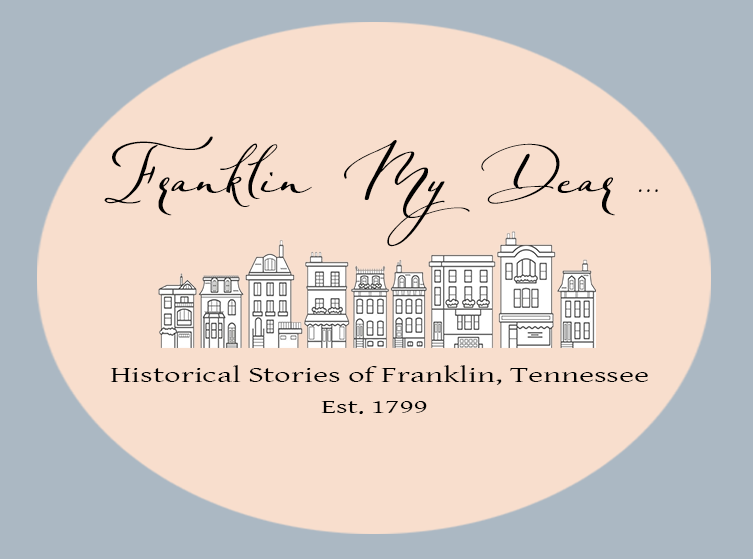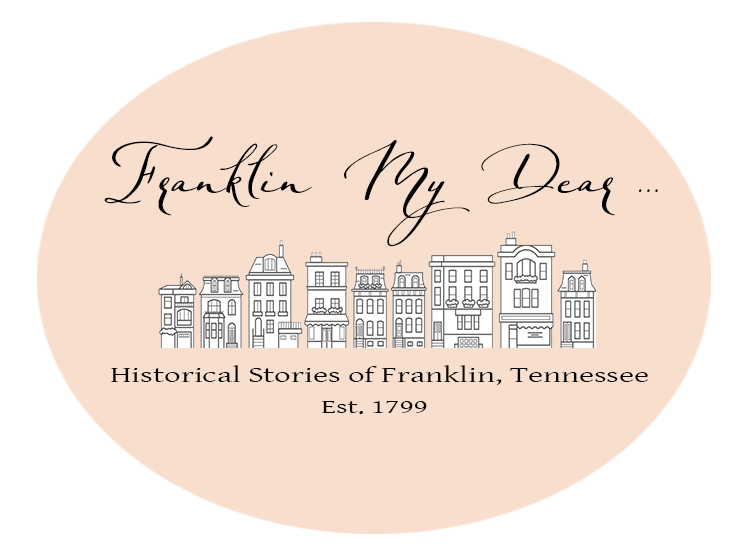Everbright Mansion
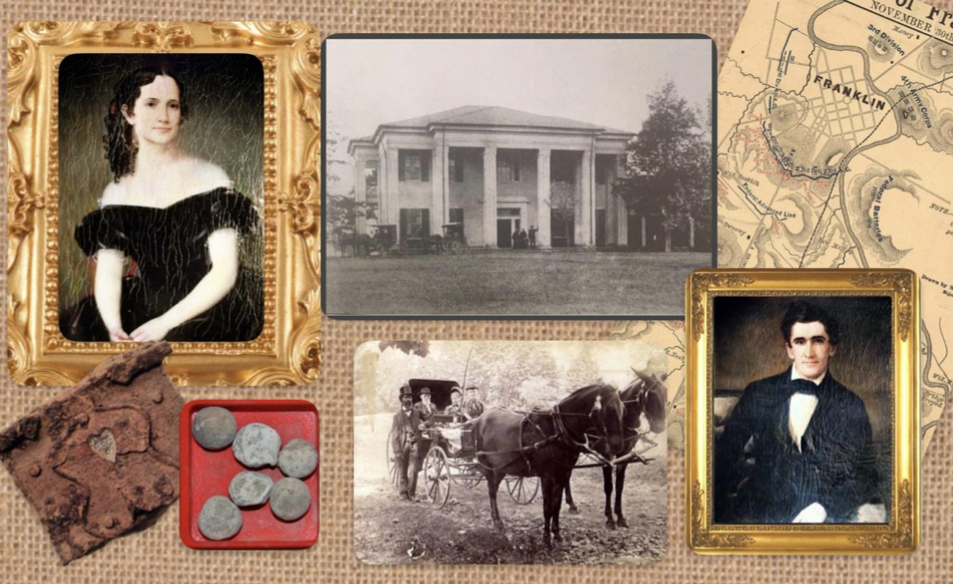
“Mrs. Bostick named her home Everbright because of the lamplight she always kept glowing in each of its windows at night, and the sunlight that poured into the rear of the mansion windows every morning.”
– Nashville Banner, 1951
The story of Everbright mansion was nothing less than something out of a fairy tale. Its position on a lofty knoll surrounded by stacked stone walls, silhouetted by acres of plush and viridescent farmland, created a scene so magnificent, it could easily have been the subject of a landscape painting by Monet or Van Gogh. Everbright Mansion, was the enchanting site where grand balls and celebrations of all kinds took place, in which many marriages, matches and proposals came about. Years after the home that sat on the Everbright property met its end, the lively music that accompanied couples dancing into the night, arms embraced and of many reminiscences of young love and youth of yesteryear, still play faintly, hauntingly if one listens closely. Although many Franklinites and visitors who grew to know Everbright and its beauty from afar grieved over its prosperous years, when it held so much beauty; just as many were unaware of the dark association the site shared with the grim events of the battle that occurred only steps from the mansion’s front door.
“The beautiful old Everbright mansion of Franklin, once the scene of joyous Southern banquets and dances, is being torn down. DOGS HOWL under the ruins of Everbright, once a mecca for antebellum Southern gallantry. Weeds thrust upwards through flagstone that have known the tread of many a merry couple.”
-Nashville Banner 1932

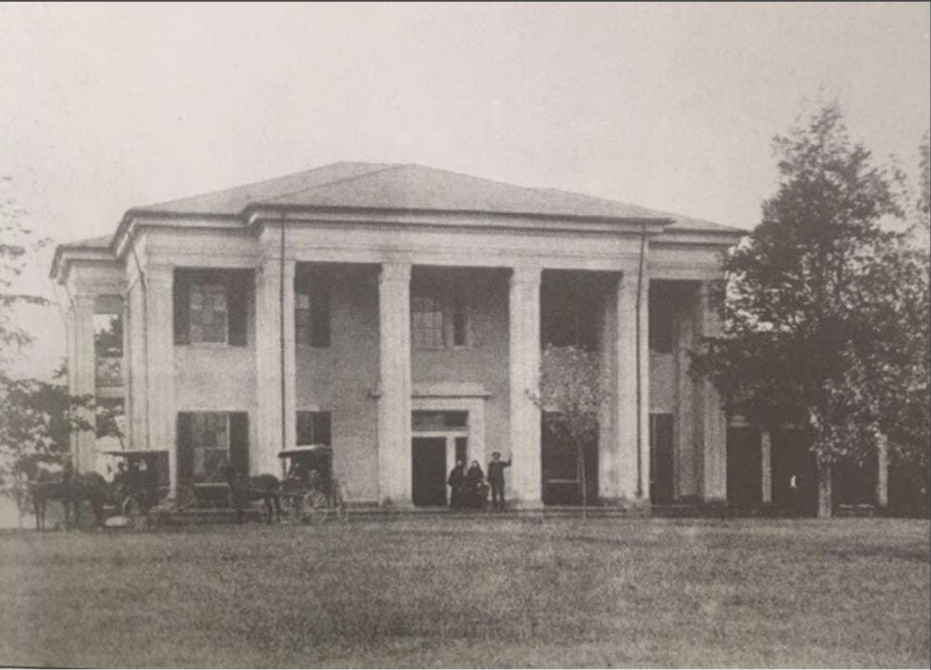
Everbright Mansion was stately, enviable, inspiring and served for many years as the jewel of the entryway to downtown Franklin. Facing two separate roads, both Columbia Pike as well as Carters Creek Pike, acres of farmland stretched out in front of each entry to the mansion, which sat up on a small hill high enough to be able to look down upon all that came within its view like a strong and mighty lion. Today, Everbright Avenue, right off modern day Columbia Pike, marks the spot where the original driveway was located.
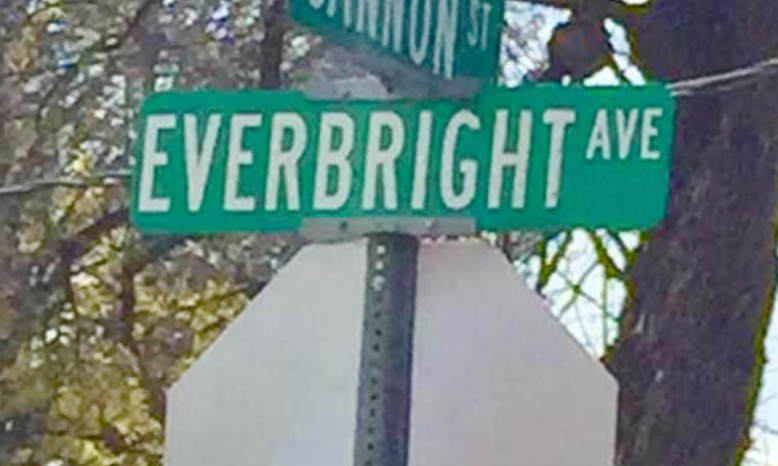
The driveway which originally took you to the Everbright home, today is paved, and is lined with houses and a modern day school campus. Positioned at the end of the driveway, perched on a lofty knoll, the home sat for almost a century. Capturing the attention of all who came to pass the mansion, Everbright presented a lovely portrait with its Greek Revival tall columns and detailing, three grand entrances and exquisitely manicured gardens. Although no map of the original plantation remains today, it’s easy to imagine the buildings that supported the dairy, spring house, smoke house, barn and other buildings which are now wiped from the spots where they once added to the picturesque farm.
We must never forget ...
One can never forget that although the beauty of the old place was undeniable, not everyone living at Everbright lived a carefree existence. The property shared the terrible association all too familiar to many Williamson county plantations, in its connection to slavery. In addition to the home and other buildings that once stood at Everbright, were at least nine slave houses. Sadly, from 1841 thru 1861, and possibly longer, Everbright existed and was supported only because of the enslaved who gave their entire lives, against their will to build and maintain the property. Every road on the property, stone stacked fence, bridge and barn were all built through slave labor. Every single brick in the grand home on the hill, its grand columns and even its steps were also made from the hard labor of those who were enslaved at Everbright. In 1850, Richard Bostick owned fifty individuals, as is noted on the slave census from that year. Every bit of success of the dairy and success of Everbright must be attributed to the hard work of the enslaved, and without question, it’s beauty. After the Civil War, and the freedom of those enslaved at Everbright, the grand home and dairy operation would never again be the success it had been during the antebellum era.
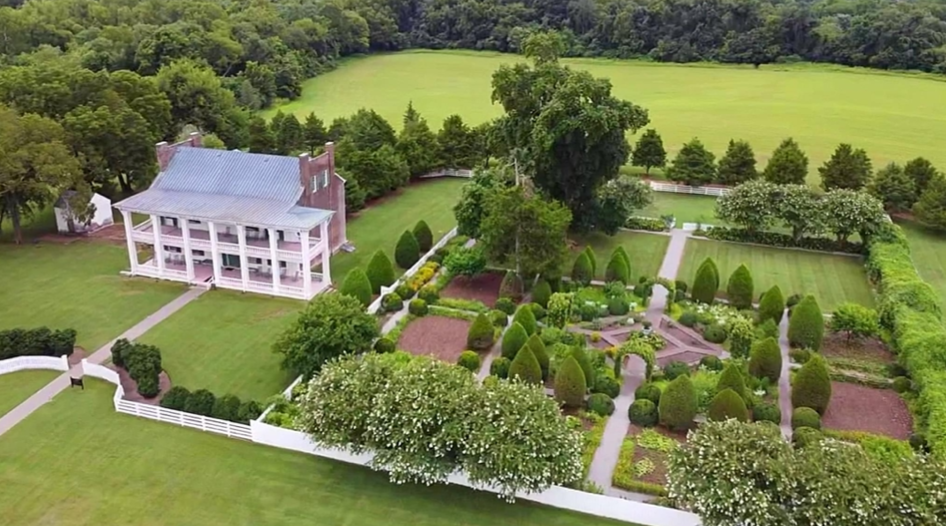
The home not only had two ornate entrances welcoming guests arriving from either direction, but a third entrance just as ornate as its twin brothers, greeting guests arriving by carriage. The land surrounding the grand home was beautifully ornamented by orchards, rolling farmland, babbling brooks and stacked and carved limestone farm fences. For at least a quarter of a century, a dairy operated at Everbright, and much of the land served as pasture, dotted by horses, cows and sheep. Everbright was known, however, for more than its agrarian beauty, as it was recalled fondly by those who were given coveted invitations to the many grand balls, picnics, and parties given at the home. Stories of the social events and of the fairy tale couple who occupied the Everbright property are still thought of fondly many years afterwards.
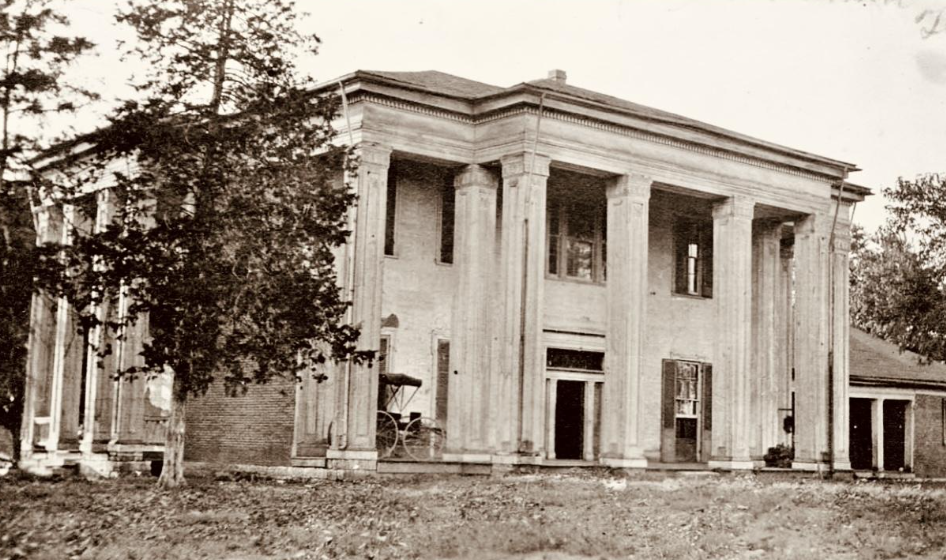
A handsome couple

The most significant owners of Everbright, each handsome and beautiful individually, were only more so, together as a couple. Rebecca Letitia Cannon (1819-1900) and Richard Whitman Hyde Bostick (1816-1853) were the beautiful couple who owned the Everbright property during its antebellum period. The years they spent at the home, will be forever intertwined with accounts of the grand residence, as never before or since have the property where Everbright sat, or the citizens of Franklin been witness to such elegance.
Both Rebecca and Richard had noble beginnings, both hailing from the community of Triune, Tennessee. Both of their fathers were involved in the business of educating the children of the community and vested much interest in maintaining academies. Richard’s father was a physician, while Rebecca’s a politician, serving two terms as Governor of Tennessee.
Three years his bride’s senior, Richard Bostick was born in 1816. During his life, Richard was a farmer, a well respected lawyer and served ten years as a legislator. Born in 1819, Bostick’s bride was Rebecca Letitia Cannon. She will forever be remembered as the grand dame of society within her small town of Franklin, Tennessee. Rebecca was beautiful, but undoubtedly an inspiration to all of the ladies within her circle for her fine manners and her ability to act as the perfect hostess to events held in her grand home. One friend, attending a social event in Franklin, upon committing a social faux pas stated that she was just happy that Rebecca Bostick had been unable to attend, for surely she would never have allowed such a breach of etiquette to go without notice.
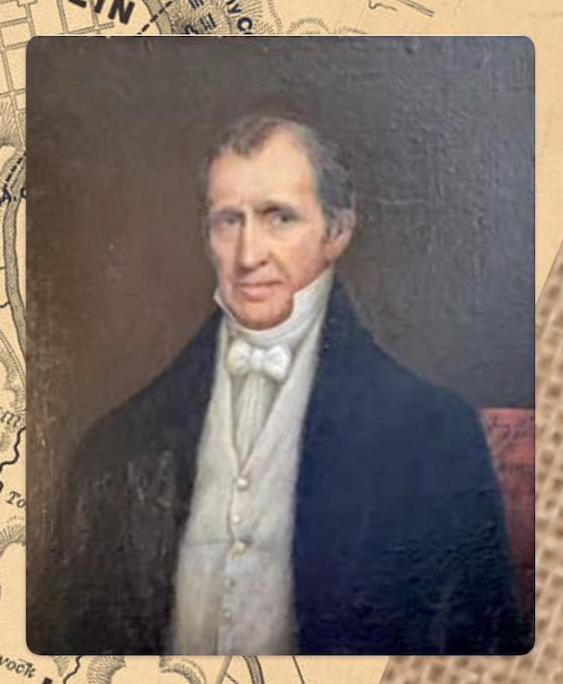
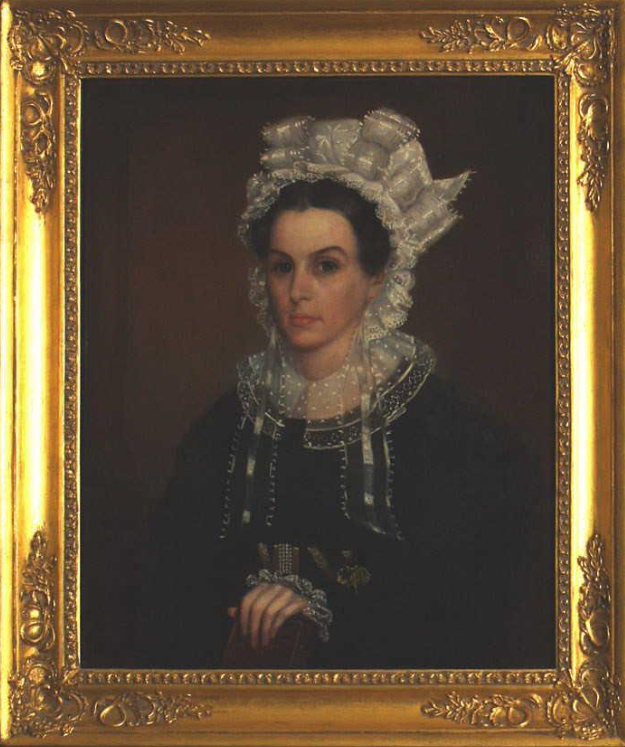

Most certainly, Rebecca’s manners and familiarity with the world of etiquette were no accident, as she was the daughter of Tennessee’s 8th Governor, Newton Cannon, and much was expected of her in the way she appeared within society.
The Cannon Family
One of six beautiful daughters and two sons of Governor Newton Cannon and his wife Rachel, Rebecca grew up a daughter of the governor of Tennessee. Despite the fact that her father was an excellent leader, politician and had accomplished much, the family lived a pioneer life, residing within a hand-hewn log house in rural middle Tennessee. The early years of the Newton Cannon family and their pioneer life, will be forever immortalized in the memoirs of Rebecca Cannon. She recalled her youth and the log home she grew up in, writing her memories, which are there for all to read, at the Tennessee State Library and archives.
“Mrs. Bostick recalled her childhood at Triune in the big log house and the frequent absences of her father when he was away on long campaigns. On his return when he rode into view the children, their tongues proclaiming to Mama that Papa was coming, would run down the hill to meet him and he would ride triumphantly to the house – two clinging behind his saddle and the least one in his arms.”
~Virginia McDaniel Bowman, Williamson County Historical Society, Journal 28, 1977
Sisters
Later in her life, Rebecca most likely had much inspiration in seeing the properties where each of her siblings resided, as they all “married well” and had properties that rivaled Everbright.
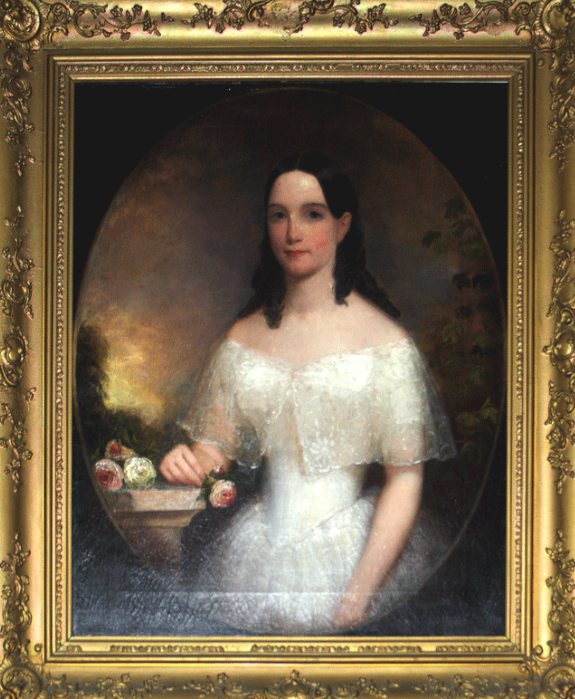
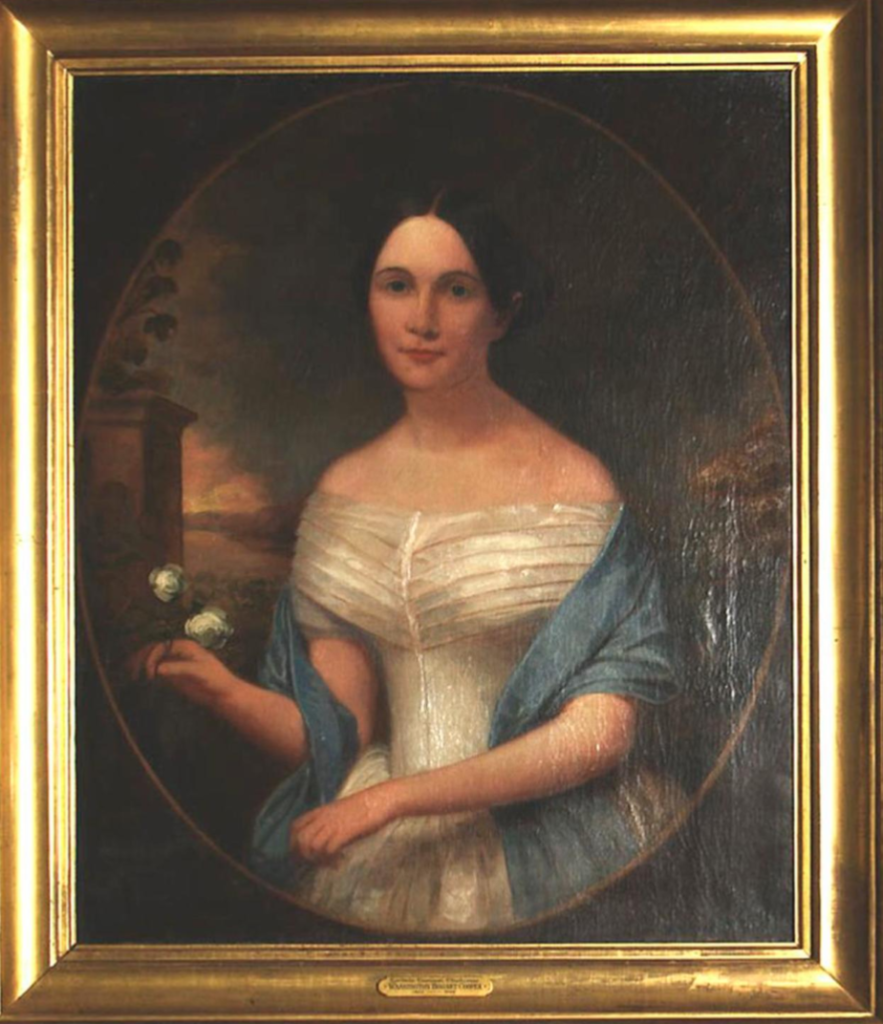

A candle in every window ...
Richard and Rebecca Bostick were often described as a “handsome couple,” and to further enforce that description are their images, beautifully captured in oil paintings that hung side by side on the grand stairwell of Everbright mansion.
These portraits were painted by Washington Bogart Cooper. The marriage between Bostick and Cannon represented a union between two of the most respected and prominent families in Tennessee .


After their marriage in 1841, the Bosticks were given the Everbright property by Rebecca’s father, Governor Newton Cannon. Shortly afterwards, Governor Cannon would die when overtaken by a sudden illness. It must have been so difficult to experience the death of her father just as she was starting life with her new husband, for Rebecca Bostick. Soon after the passing of her father, Rebecca and Richard would not only be in the midst of renovations of their new property, but expecting their first child. Newton Cannon Bostick was born soon after, and named for his recently passed grandfather. Rebecca Bostick would experience so much change in only the span of a year. Before marrying Richard Bostick, Rebecca had been a young women without a care in the world, living within the safety of her parents home, surrounded by her siblings, Mothers love and powerful fathers protection. After the couple’s January of 1841 marriage, Rebecca most likely was reeling from so much change. When the new year began in 1842, Rebecca would find herself no longer the carefree young girl she’d been before, but a married woman with a new husband, baby and home. To compound the impact of the change was the sudden death of Rebecca’s father, which occurred only weeks after the birth of the newlyweds first child, born in September of 1841. Oh, how Rebecca must have grieved, at her fathers unexpected death, as he had never shown any sign of illness and was only sixty years old at his passing.
The home on the Everbright property was originally constructed by John Bennett in 1835 and was significantly smaller than what Everbright became after the Bosticks moved onto the property. After Governor Cannon gave the property to the newlyweds, Richard and Rebecca would add acreage, enlarge their home, and operate a successful farm and dairy operation at Everbright. The home eventually had twenty-two rooms, with many outbuildings dotting the landscape around the Bosticks property. The Bosticks added more than 400 acres in less than five years to their property. The modest home that sat as the centerpiece of the rolling farmland where the new little family the Bosticks had become, was soon transformed into a mansion. Tall columns flanked each of the three separate entrances to the home, creating a regal portrait. The home was eventually painted white, and constructed of four brick thick walls. The home was so well-insulated, it kept warm all winter. Mammoth in size, the home was designed for entertaining, with a grand entry hall and its own large ballroom. Folding wooden doors, designed to be hidden, allowed areas usually divided into separate rooms, to transform to allow open space for entertaining. Wide hallways divided both levels of the house from the front and up to the back entrance with two sets of stairs. The front, grand stairway ascended from the right of the front foyer to the upper story, and a simpler stairwell in the rear of the home, which had been from the original, pre-enlargement house, functioned as an additional, more utilitarian stairwell. Each room was adorned with elaborate moulding, cornices, carved mantels, and crystal chandeliers. One can only imagine how the home was furnished, but there’s no doubt that the inside mirrored the grandeur of the exterior. No doubt, memories of the home Everbright and the landscape around it were impressive to all who had the pleasure of visiting.
The Family
The Bosticks would start their family at Everbright, with Richard and Rebecca having three sons while living on the property; Newton (1841), John (1843) and Richard (1850). They would spend their entire marriage on the Everbright property. From all accounts, the handsome couple were happy at Everbright; however, their time together and living the idyllic lifestyle their surroundings provided, would come to an end far too soon. Rebecca’s love, Richard Bostick would die young, passing away only twelve years into their marriage. He was only thirty-six years old. Aside from Rebecca, Richard Bostick would leave his boys, ages twelve, ten and three years old. After Richards’ untimely death in 1853, Rebecca would stay at Everbright, operating the dairy farm and bringing up her sons alone. From that day forward, on maps and references in society; she was known as the “Widow Bostick.” Despite the fact that Rebecca found herself without a husband, she would always maintain a reputation as a lady of high society in her little town of Franklin, Tennessee. She was known to entertain frequently, often hosting events for the ladies of her community and graciously offering the use of her home at Everbright anytime it was needed for picnics, parties and political functions.
It's darkest day
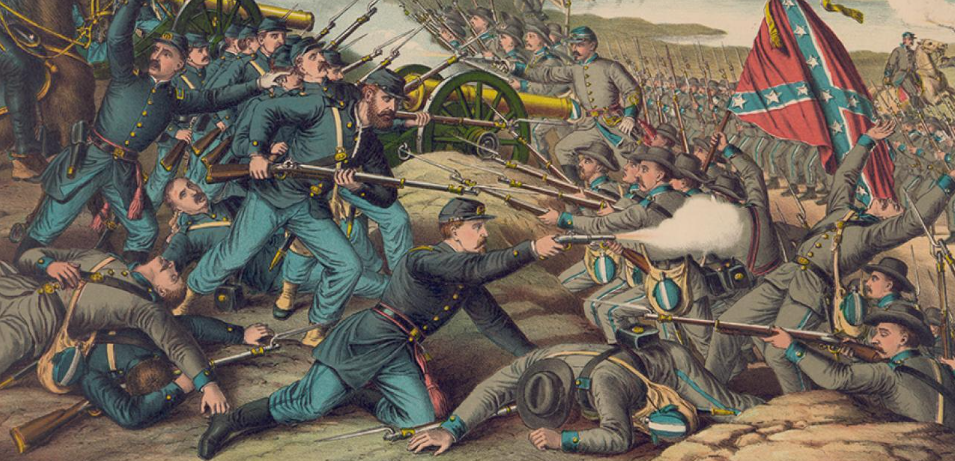
Life continued for eight years following Richard’s death, when the winds of war swept thru sleepy Franklin, Tennessee with its occupation by Federal forces in 1862. At this time in Rebecca’s life, she was the forty three year old mother of three boys, ages twenty one, nineteen and twelve. Two of Rebecca’s sons would join the Confederate army, Newton and John, leaving Rebecca and her youngest son Richard (Dick) as the only residents of the mansion at Everbright. Rebecca and her neighbors would experience nearby skirmishes and receive news of the deaths of neighbors and friends’ sons, fathers and husbands. Excruciating was this news for Rebecca, as these were people close to her heart, and she feared the same fate for her own sons. During the federal occupation of Franklin in 1863, the matron of Everbright learned to hide
what valuables she owned from marauding soldiers from both sides, and utilized a hiding place under her cellar stairs as a spot to keep her coined silver hidden and other valuables under the cobs used for the fires she kept going in her home. Rebecca’s home was often foraged by hungry, desperate soldiers and troops and was used by commanders from both sides more than once as their headquarters. Sometime before the bloody Battle of Franklin began on November 30, 1864, Rebecca’s son Cannon sought refuge at Everbright, as he had been granted leave from his regiment. Wounded and hungry, he was eager to get back to the safety of his home. As he got closer to the Everbright property, Cannon realized he’d stumbled into enemy territory, and preparations for a battle were underway.


Although Rebecca’s son was wounded and needed medical care, he wasted no time in stealthily finding his hiding place where he could stay safe, with the battle raging all around him. Cannon Bostick utilized the area below the stairs for a successful hiding place, and thankfully was never discovered. During the Battle of Franklin, the Everbright home was used as headquarters for General Bates, with the very first shots of the Battle of Franklin fired only steps away from the front door of the home. An idea of the assault the Everbright property saw was recalled by one commander:
“I was met by a person on horseback inquiring for General Sharp. I made myself known when he said, ‘General Bates Says that if you let your left rest on the (Widow Bostick’s) brick house and swing around as you move forward, you will take the enemy’s works.’ I sent my staff officers, except my aid, Captain Harris to caution the men not to fire. We were within thirty paces of the enemy’s works when the darkness was lighted up as if by an electric display. The enemy was there to greet us. Our brave boys gave a yell, scrambled through the locust grove and went into the works. I was shot just below the knee and it seemed as if my leg was shivered into splinters. I directed Captain Farris to report to Colonel Bishop that I was wounded, and direct him to assume command of the brigade. Colonel Bishop was killed at the works, and Colonel Simms’s leg was broken; Colonel Calhoun was wounded; and from that on it seems to have been managed by the company officers and the men that were spared”
~Brig. Gen. Jacob H. Sharp

While the bulk of the fighting during the destructive battle happened at the Carter house property, Rebecca’s Everbright was no doubt in terrible condition following the war. Minie balls and other relics from the battle fought at Everbright could be found for years afterward, with Minnie balls picked up by the handful in the front yard until 1912.
There is no record of how many men received medical care at Everbright following the battle. But certainly many soldiers died, had surgery performed and were buried around the Everbright property; as it was utilized for a year following the Battle of Franklin as a field hospital.
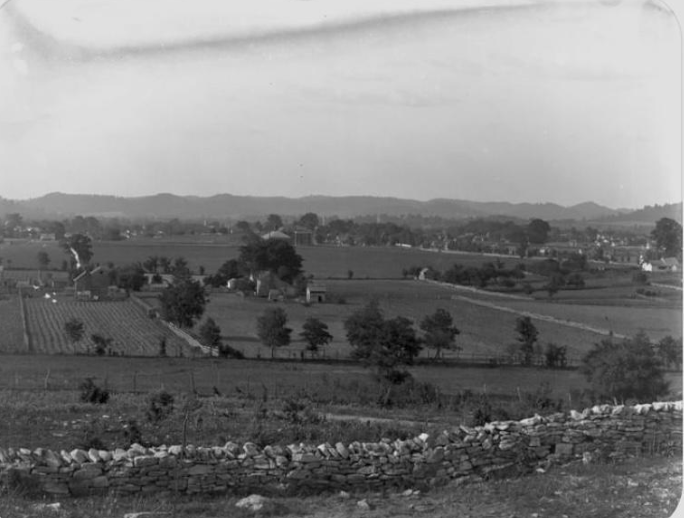
Certainly Rebecca had no interest in living in her home at Everbright after the Battle of Franklin, as it seems she never spent time there afterwards. So many possibilities exist for scenarios that could’ve created bad memories for her, that an exit from the Everbright property was most likely inevitable at the conclusion of the Civil War.
Following the war, Rebecca Bostick left Everbright and moved to another home in the West End area of Franklin. She would remain a prominent member of society. Rebecca left Everbright, and never returned again.
Unfortunately, very little was recorded concerning the events that occurred during Everbrights role during the period of the civil war. Although the home was occupied by confederate and union forces, was left battle scarred and played a huge role in the Battle of Franklin and afterwards; how Rebecca and her sons weathered those events and destruction must be left to the imagination.
Time has taken its toll, and added the scars upon the old mansion. Shrubbery that once adorned the lawn and stately trees disappeared, and now were hidden by grass and weeds; owls sounded their cries from the tree tops, and pigeons built their nests under the eaves of the servants’ wing, and there was left no trace of the once lovely garden in the rear. (Sources Nashville Public Library, Nashville Room)
Never to return ...

The Everbright property passed through a few ownerships after Rebecca Bostick moved out following the civil war. Samuel Lowry Graham would buy the home at Everbright in 1875, following his marriage to Martha Clouston, with the goal of turning Everbright into a resort.
Martha Clouston was the daughter of Edward Graham Clouston, of Clouston Hall on Second Avenue in downtown Franklin, Tennessee. At the time of the purchase, badly needed maintenance was performed and alterations made to improve the property further. Everbright was once again lively and the host of countless social gatherings. An account appeared in a Maury county paper:
“The grand masked ball which came off tonight at the residence of Mr. Roland, [caretaker] near town, was a marked success in all respects. Nearly all the young society people from town and vicinity attended, and quite a number of gentlemen from Nashville and other points. All present wore pink dominoes and pink mother hubbards during the part of the evening; and after dancing awhile to the music of the Italian band from Nashville, the disguises were removed and the ladies were found in elegant evening dresses and the gentlemen likewise.The names of participants cannot be given in this dispatch. The dancing and promenading continued until long after midnight and all dispersed with pleasant recollections of the occasion.The old fashioned mansion is the property of Mr. S. L. Graham, of Hickman County, and is beautifully situated on a hill between the Carter’s Creek and Columbia turnpikes with a front toward each. It is one of the largest residences in the county and its name, “Everbright,” reflects its happy character in other days when Mrs. Rebecca Bostick was its hospitable proprietor. Mr. Graham lets out the property to a pleasant family of Northern people who came here a few years ago. The refreshments tonight were elegant and enjoyed by all. The young ladies were chaperoned by Mrs. Etta McLemore and other ladies from town.”
~Columbia Herald 1889
Eventually, the Everbright property would change hands again, with ownership passing on to the former Mayor of Franklin during the civil war, John Brown McEwen. McEwen hoped to make the home into a resort, but died before his dream was realized. Eventually, two separate schools utilized the Everbright property after their buildings were lost to separately occurring fires; first the Mooney School and later Battleground Academy.

After each owner abandoned use of the Everbright property, huge tolls were taken on the home, damage was inevitable with a series of tenants, and finally with the homes abandonment and intrusion of the elements and animals. The love and attention given to the property and grand home at Everbright would go unmatched after the period it was owned by the Bostick family. Although the home at Everbright stood for almost one hundred years, it was only occupied permanently and given the care and maintenance any home deserves for the twenty three the Bosticks were the owners and caretakers.

Everbright was owned by the Commercial Central Bank of Franklin in 1937, when advertisements ran in the newspaper for the sale of its “fine lot of materials used in the construction of this stately mansion.” The grand building was dismantled, with the parts of the mansion sold to builders and utilized in other properties all over the city of Franklin, Tennessee. Everbright lives on and holds the memories of its grand galas and of being a beacon of high society within the mouldings, doors, mantles and cornices still in existence within other homes throughout the city.
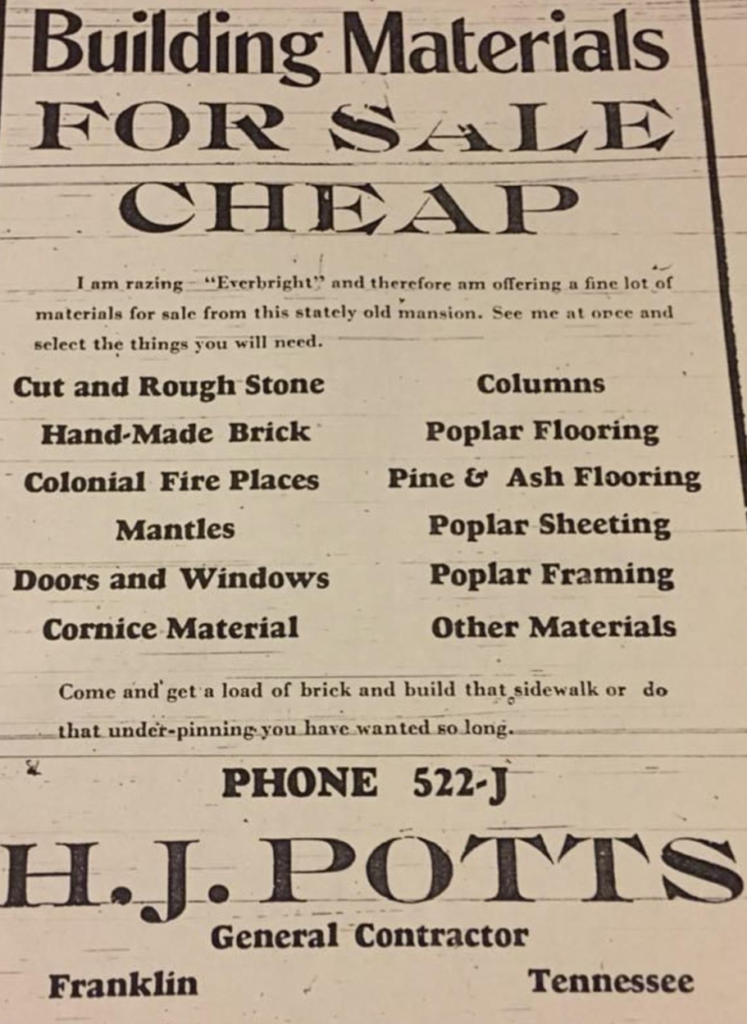
After the razing of the old home, a neighborhood was constructed on the property where the Everbright Mansion was located. Within the back and side yards of residents’ homes, still lie the stone fences and posts, foundations and basins created for use in the Dairy farm. Treasure hunters still run across items that appear after heavy rains that may have belonged to the Bosticks, or perhaps one of those in attendance during grand balls held at their Everbright mansion so many years ago.

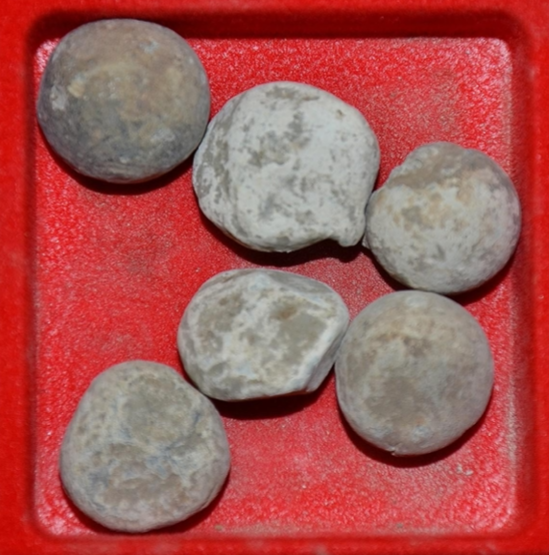
The Cannon boys made successful men, with at least one being an accomplished horse trainer. Rebecca would eventually move to St. Louis, living with her son, John Bostick and his family. She died in August of 1900, and was brought home to Franklin for services and to be buried.
One can only wonder if on her deathbed, Rebecca recalled scenes of Everbright with its softly flowing waters, fragrant shrubs, grass as green as any amongst the rolling pastoral land of Tennessee; or if she saw her love Richard, with his dark hair and eyes and smile that could light a thousand candles. Rebecca may have recalled the parties and heard the laughter and swirl of the wide antebellum skirts that would move as dancers made the ballroom their own. Surely Rebecca was able to forget the tragedy of losing her husband just at the start of their lives, and of the battle that enveloped her home and property for the four years the Civil War raged on. Rebecca was laid to rest next to her love, Richard, in Resthaven Cemetery, the oldest public cemetery in downtown Franklin, Tennessee. They are interred side by side only about a mile from the home where they lived, loved and raised their family together.
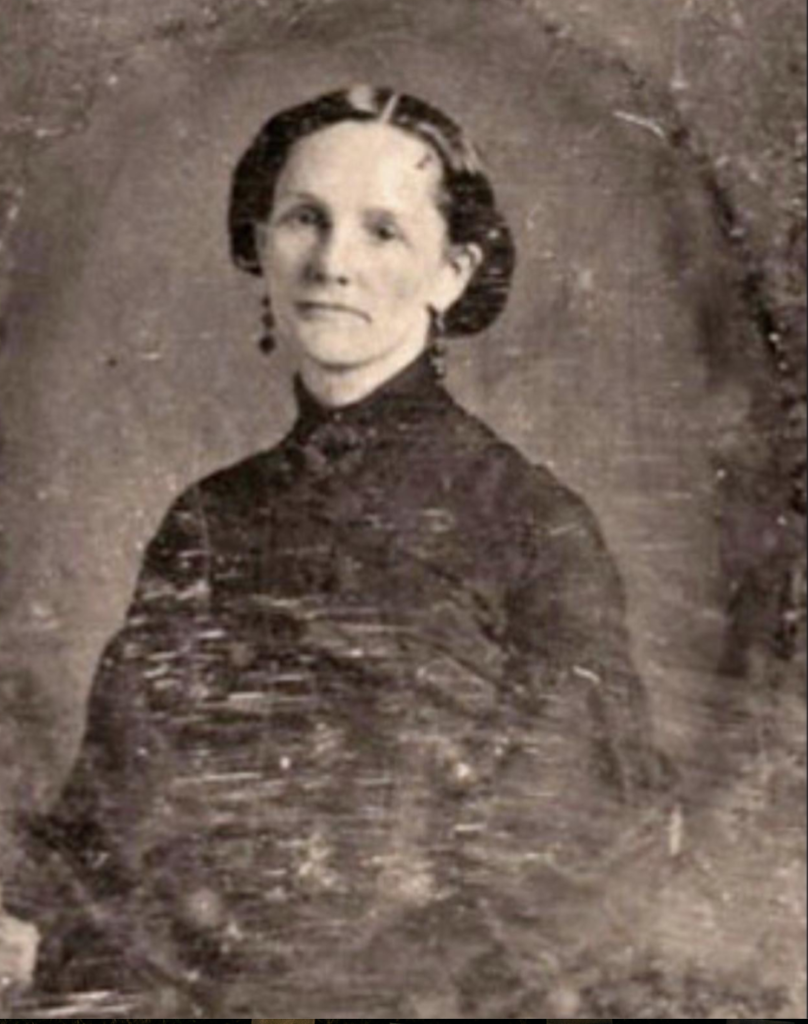

For thirty seven years after Rebecca’s death, her home would sit, under different ownerships, but becoming more and more dilapidated as time went on. Rumors or maybe truths about ghosts residing within the walls of the old mansion, so much so, few dared to approach after darkness fell. Those who dared enter told of apparitions; a translucent young woman, crying for her lost love, a ghoulish soldier absent his arms and in a rage; both as new occupants of Everbright and haunting the old home. The youth relaying the ghostly incidents, far removed from their parents’ recollections of yesteryear captivated their peers with these tales, while admirers and those that remembered Everbright at its apex were able to recollect the splendor of the old place forever instilled upon them.
“In the 1950’s there were still large sections of the walls in the north side of Everbright St, now houses, we used to play on. Now houses, sure the pieces are there in backyards. The rock walled spring was there until the building of Spring St.”
~J Spence Culberson


Thanks for reading ... Kimberly
For more on Kimberly, please visit the About page on this website
